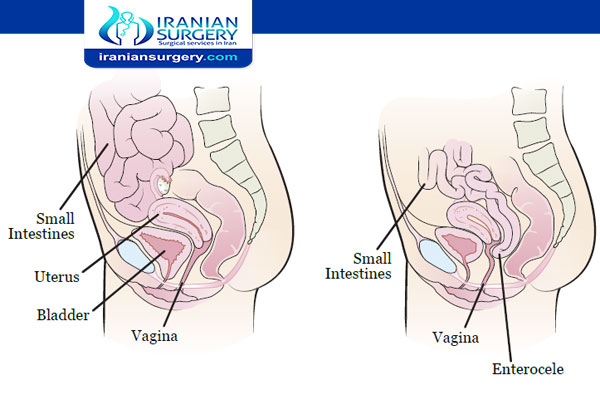Cystocele and rectocele repair with hysterectomy

How long does it take to recover from Rectocele and Cystocele surgery?
What happens after Cystocele and Rectocele surgery?
Can you have both Cystocele and Rectocele?
Cystocele and Rectocele Repair Complications and Risks
Cystocele and rectocele repair with hysterectomy
Cystocele and rectocele repair is surgery to lift and tighten the tissue around the bladder and rectum so that these organs no longer push into the vagina.
- Cystocele: An operation to repair a cystocele is called an anterior repair (colporrhaphy). The operation is done through the vagina. It involves making a cut in the front of the vagina so that the bladder and/or urethra can be pushed back into place. Once this is done the surgeon stitches together the existing tissue with stitches which dissolve inside the vagina. Some excess vaginal tissue may need to be removed. If you have associated stress urinary incontinence, an additional operation may be required to correct this.
- Rectocele: Surgical repair of a rectocele is called a posterior repair or posterior colpoperineorrhaphy. The rectocele is repaired through the vagina. The procedure is similar to an anterior repair. The cut is made on the back wall of the vagina and the rectum is pushed back into place. The doctor stitches together the existing tissues to create a new support for the prolapsed organ and then removes some of the skin from the vaginal wall to make it stronger. This type of repair is associated with potential narrowing and shortening of the vagina and you will be informed of this.
Read more about: Virgin tightening surgery before and after
Read more about: What size of ovarian cyst is considered large?
Read more about: Rectocele Repair Surgery

Start your virtual visit now
Your doctor may recommend surgery for a large or severe rectocele, especially if you have symptoms like:
- Bulging, pain, and discomfort in the vagina
- Difficult bowel movements
- A feeling of pressure or “fullness” in your bowels, even when you’ve just had a bowel movement
- Inability to control your bowel movements Because rectocele repair is a major surgery, a doctor will often suggest it only after trying other treatments. Sometimes rectocele repair is done at the same time as a hysterectomy.
Read more about: Cystocele and rectocele at the same time
How long does it take to recover from Rectocele and Cystocele surgery?
The length of time it'll take before you're well enough to leave hospital depends on your age and your general level of health.
If you have had a vaginal or laparoscopic hysterectomy, you may be able to leave between 1 and 4 days later.
If you have had an abdominal hysterectomy, it'll usually be up to 5 days before you're discharged.
You may be asked to see your GP in 4 to 6 weeks, but follow-up appointments with the hospital are not usually needed unless there are complications.
It takes about 6 to 8 weeks to fully recover after having an abdominal hysterectomy.
Recovery times are often shorter after a vaginal or laparoscopy hysterectomy.
During this time, you should rest as much as possible and not lift anything heavy, such as bags of shopping.
Your abdominal muscles and the surrounding tissues need time to heal.
Read more about: Differences between a cystocele and a rectocele
Cystocele and Rectocele Repair Complications and Risks
Problems from the procedure are rare, but all procedures have some risk. Your doctor will review potential problems, like:
- Reaction to anesthesia
- Infection
- Bleeding
- Accidental damage to vagina, rectum, and bladder
- Accidental damage to nearby organs
- Difficulty with bowel movements
Before your procedure, talk to your doctor about ways to manage factors that may increase your risk of complications such as:
- Smoking
- Drinking
- Chronic disease such as diabetes or obesity
Your healthcare provider will explain the procedure and any risks. Some possible risks include:
Anesthesia has some risks. Discuss these risks with your healthcare provider.
You may have infection, bleeding, or blood clots.
The bladder, rectum, ureters (the tubes from the kidneys to the bladder), or urethra may be damaged. If damage occurs and your provider is aware of it, he or she will try to repair it during the operation.
You may keep leaking urine or bowel movements.
You may have a constant feeling that you need to urinate.
You may have problems urinating.
The cystocele or rectocele may come back.
Read more about: Cystocele surgery
What happens after Cystocele and Rectocele surgery?
You may stay in the hospital 2 to 4 days.
You may need to go home with a catheter in your bladder until the bladder is working normally again. Your healthcare provider will decide when the catheter can be removed during a follow-up visit.
Constipation is common after surgery because of some medicines and inactivity. Eating fruits and vegetables and drinking extra fluids may help you avoid constipation. If diet and extra fluids are not enough to avoid constipation, your provider may recommend a stool softener or a laxative. Check with your healthcare provider if constipation keeps being a problem.
You may have some bloody or pink drainage from your vagina for a few weeks.
Ask your healthcare provider:
- How long it will take to recover
- What activities you should avoid, including how much you can lift, and when you can return to your normal activities
- How to take care of yourself at home
- What symptoms or problems you should watch for and what to do if you have them
Make sure you know when you should come back for a checkup.
Read more about: Cystocele And Rectocele repair surgery
Can you have both Cystocele and Rectocele?
You may also have a vaginal and rectal exam. You may need to have images taken of your urine and bowel activity. Cystocele, urethrocele, enterocele, and rectocele are particularly likely to occur together.
Colpoperineorrhaphy surgery
In women with uterine prolapse and weak posterior vaginal walls (rectocele), Colpoperineorrhaphy is indicated.The posterior vaginal wall supports and holds the rectum (where the stool is stored daily). When the posterior vaginal wall weakens, the rectum can prolapse. This prolapse is the rectocele. Posterior vaginal wall prolapse make stool and bowel movements pretty difficult, since forcing the stool down makes the rectum swell forward, rather than pushing out the stool.
Surgical repair of a rectocele is known as posterior repair or posterior colpoperineorrhaphy. The rectocele will have to be repaired via the vagina. The procedure is similar to a repair of anterior vaginal wall prolapse. The surgical cut is done on the back wall of the vagina and then, the rectum is pressed back into place. The surgeon then stitches together the tissues that are present to create a new support sling for the prolapsed organ and then takes away some of the skin in the vaginal wall to make it a stronger repair.
Read more about: Pessary for cystocele and rectocele
10 common questions about cystocele and rectocele repair with hysterectomy
[kkstarratings]

